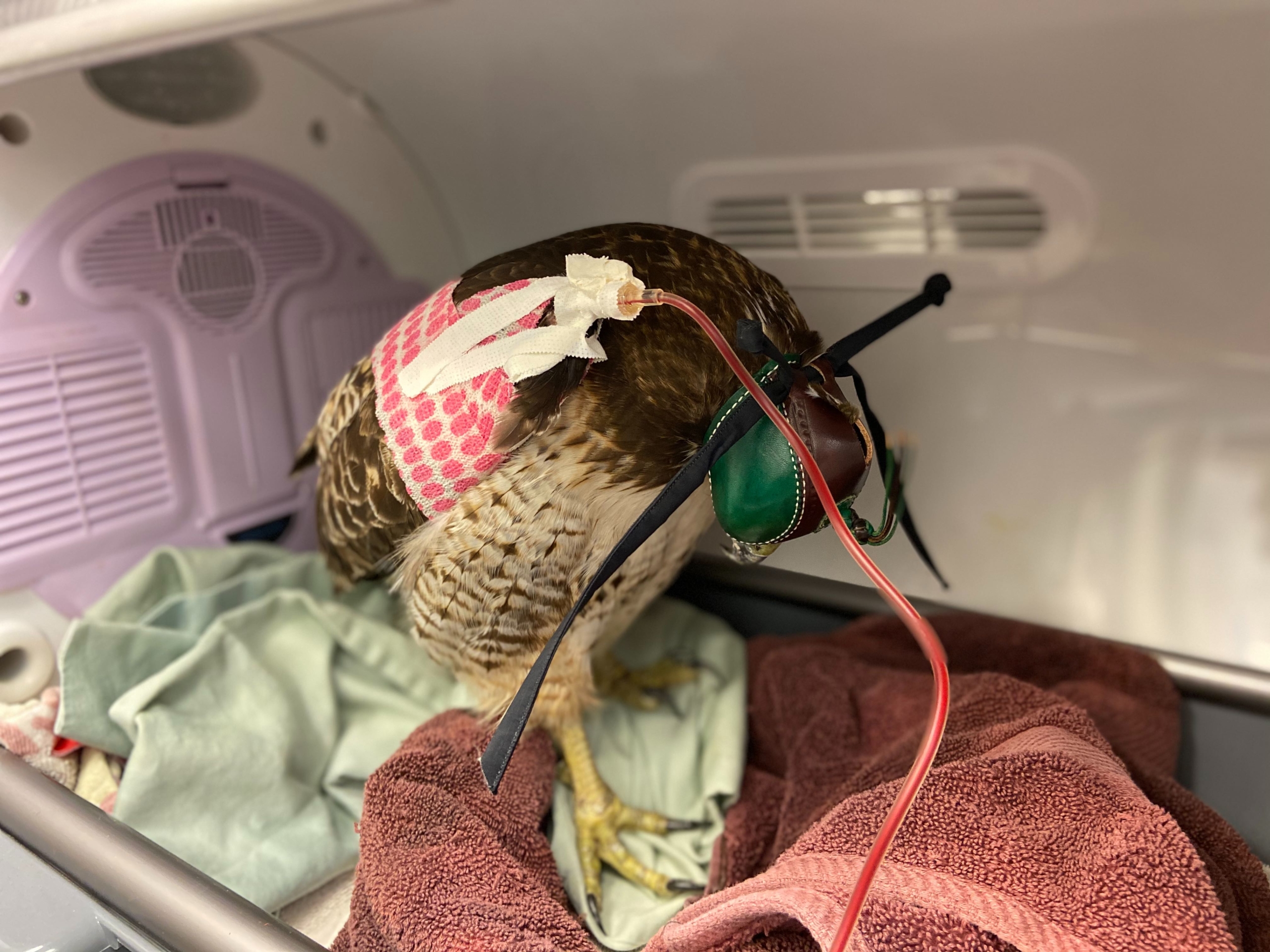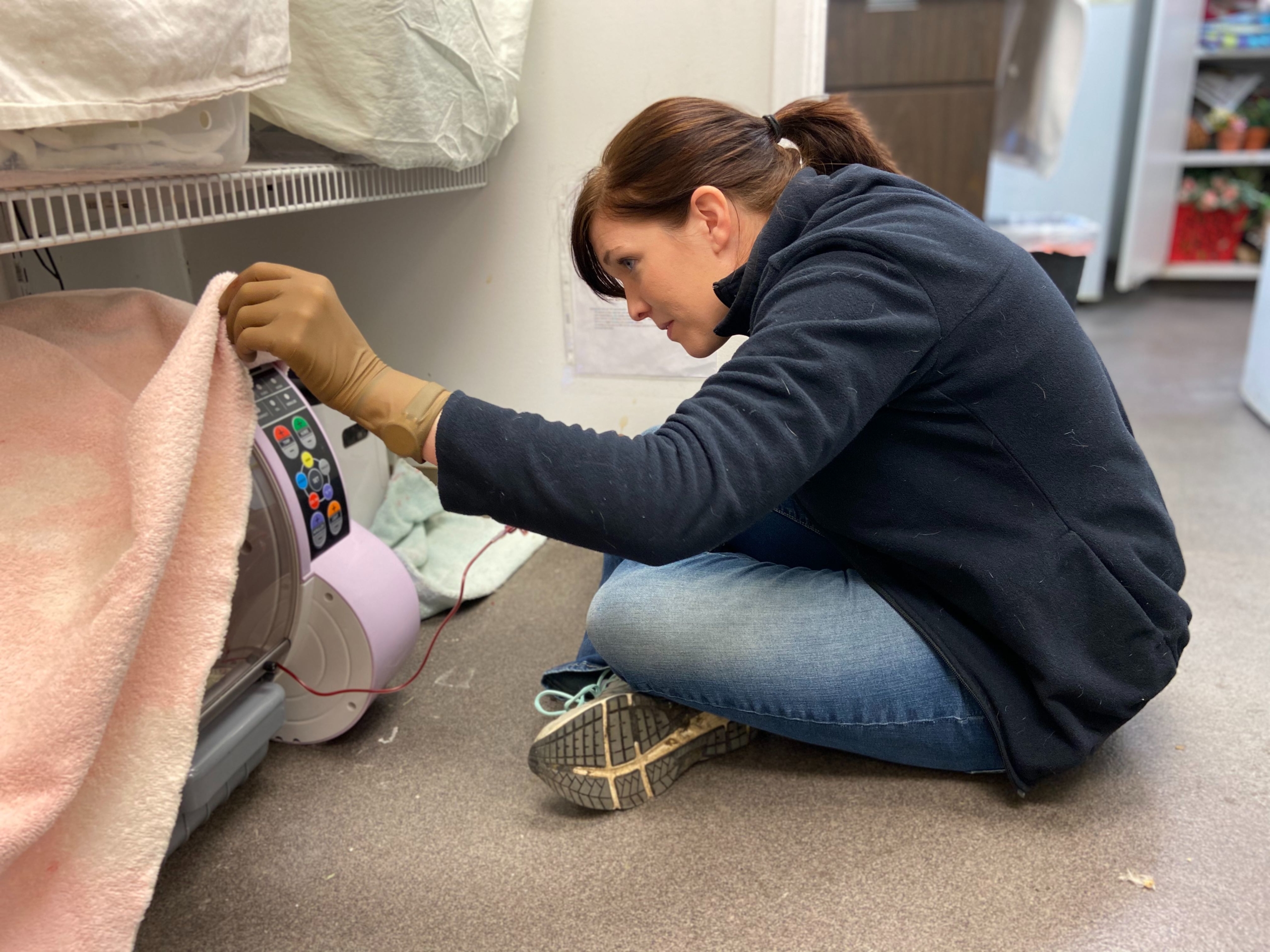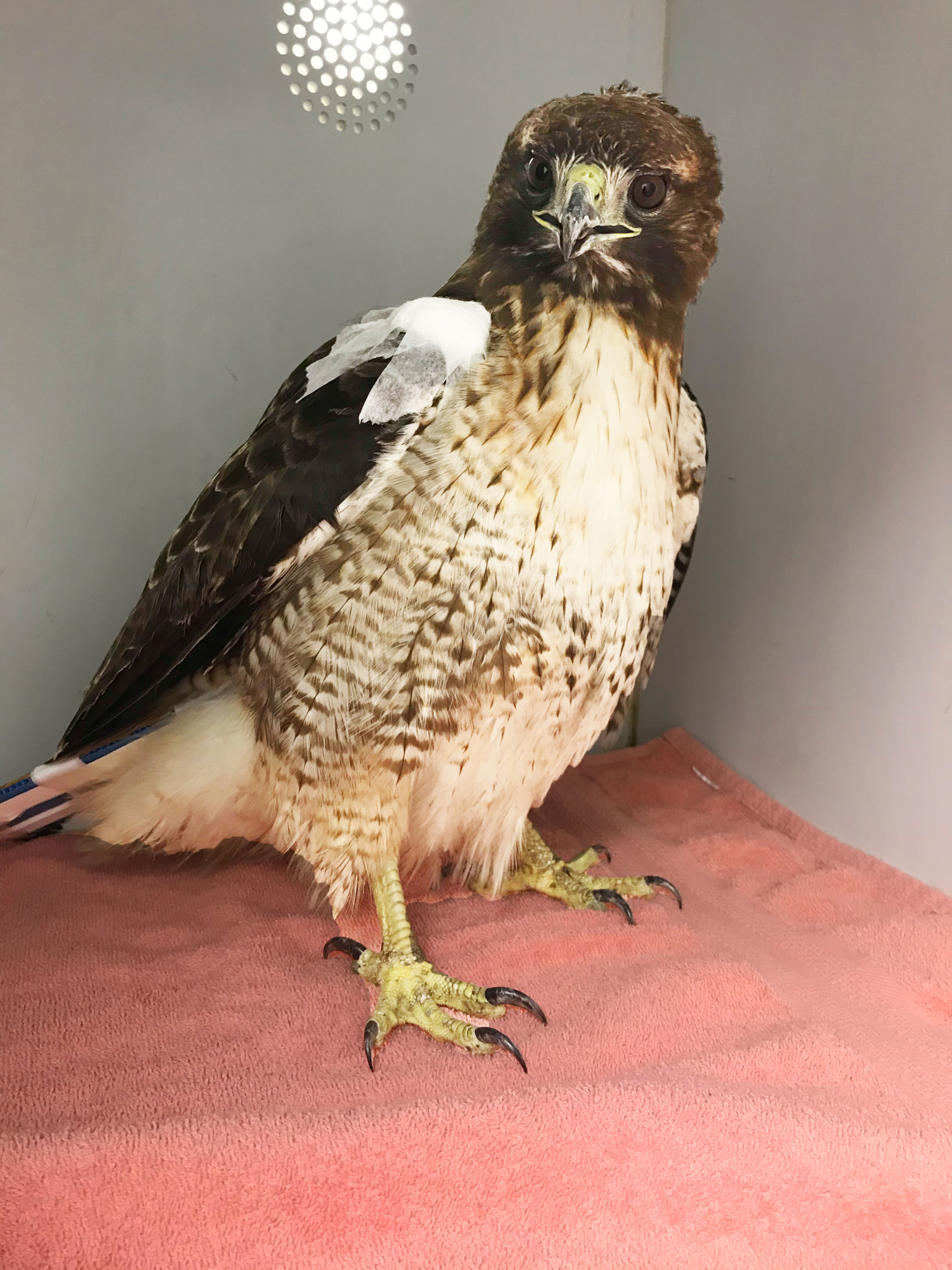CWC Performs Its First Hawk Blood Transfusion
By Dr. Stephany Lewis, Veterinarian
On the morning of December 30th, CWC received an adult female Red-Tailed Hawk from Newbury Park with evidence of anticoagulant rodenticide toxicosis (rodenticide poisoning). Raptors are exposed to rodenticides by ingesting poisoned rodents, and it leads to an inability to clot their blood, resulting in massive and often fatal blood loss. Our Hawk patient had multiple bruises on her body, was actively bleeding through a tiny puncture wound on her toe, and was severely anemic. We performed a crude test that quickly helps support a diagnosis of anticoagulant rodenticide toxicosis; we pulled a small amount of blood from the bird and placed it in an additive-free tube. Normally, a Hawk’s blood should clot within 2-5 minutes in the tube; our patient’s blood did not clot until the next day!

Hawk 3859 receiving a blood transfusion, photo by Cambria Wells
I decided to attempt a treatment that I had not performed since I was a dog and cat veterinarian; I opted to give this bird a blood transfusion. For a blood donor, we used another systemically healthy adult female Red-Tailed Hawk who had been in our care for about two months, but still had at least a few weeks to go in her rehabilitation process. She was briefly placed under anesthesia, and a unit of blood (which for her size is about 10 mL) was drawn from her jugular vein into a syringe with a special anticoagulant in it commonly used for blood transfusions. Our donor bird recovered extremely well, and no negative effects from the blood donation were seen.
Our recipient bird had a catheter placed into her right ulna. For birds, intraosseous catheters (catheters placed into the bone) tend to be more reliable than intravenous catheters since bird veins are very small and fragile, and the medullary cavity (marrow) of most bones (except the “hollow” ones that are continuous with their air sacs) are directly connected with their blood vessels.

Dr. Lewis administering blood transfusion, photo by Cambria Wells
The blood was slowly given through a blood filter and into the intraosseous catheter. The Hawk began to perk up towards the end of her blood transfusion and started to nibble at the line, so we placed a falconry hood to keep her calm and keep her from fussing with her catheter and line. She completed her blood transfusion without any complications and was administered fluids for the rest of the day through her catheter. Her catheter was removed that evening. We also started her immediately on vitamin K, which is an antidote to this type of rodenticide.
The next morning, I received a message from one of our technicians describing this bird as “salty.” And indeed she was! She was bright, alert, quite feisty, and significantly less anemic! I had never seen such marked improvement so quickly in a patient suffering from rodenticide. From then on, her recovery was smooth sailing; she was able to live in one of our outdoor flight pens while completing her therapy, and the vitamin K was just hidden in her diet. The vitamin K is always administered for a full month, until the rodenticides should have cleared the body. Her anemia quickly resolved, and her blood was able to clot normally after discontinuing the vitamin K. After a couple of weeks reconditioning in our largest flight pen, she was successfully released back into the wild!

The blood transfusion recipient the next day, photo by Dr. Stephany Lewis
We were all so happy to have had such a successful outcome for this patient; however, many carnivores suffering from secondary rodenticide toxicosis do not have positive endings. CWC receives between 20 and 40 cases of secondary rodenticide poisoning yearly, and the success rate historically has been less than 10%. Almost all these patients perish in the first 12 hours, which is before our vitamin K therapy is able to take effect and stop their bleeding. In this case, the whole blood transfused not only provides life-saving oxygen and nutrients to their cells, but also replaces some of their clotting factors that have been inactivated by the rodenticide, so they can immediately stop the bleeding that is occurring. This is very helpful while we wait for the vitamin K antidote that we give to take effect, which takes 12-24 hours.
Our hope is that with this treatment, our success rate for patients suffering from these poisons will increase. The only challenge may be finding a readily available donor bird, as bird blood cannot be effectively stored for any significant amount of time. However, birds do not have any naturally occurring antibodies to blood types, so we can safely give a blood transfusion without typing or cross-matching and can even give blood from one completely different bird species to another without risk of a serious transfusion reaction. Though the best thing for our patients is for rodenticides not to be used at all, so they never need a transfusion in the first place! Please use poison-free alternatives for rodent control to protect all of our native carnivores!
Support CWC’s treatment of rodenticide-poisoned Hawks. Donate to the Have a Heart for Hawks campaign at cawildlife.org, mail in the enclosed envelope, or call us at (310) 458-9453, ext. 101.

Great job Dr.Lewis!thanks again and again for ur compassion for wild animals that need ur help.
Thank you healing team for your work to resque and make well our precious resource- wildlife. You have brought awareness of rofentcides and the I’ll effects they cause. I stand with you in the fight for alternative methods to keep rodents at bay. Love the recovery stories and unfortunately the truths of the birds that fall through the cracks. My prayers are with you and to keep this world moving forward in the protection of our wildlife. God bless you and your hard work. Love Laurie Bevington
Thank you for sharing the amazing work you do. I look forward especially to the ‘Pet of the Week’ posts. You are a wonderful Doctor and a great Organization. Thank you for helping all these creatures!